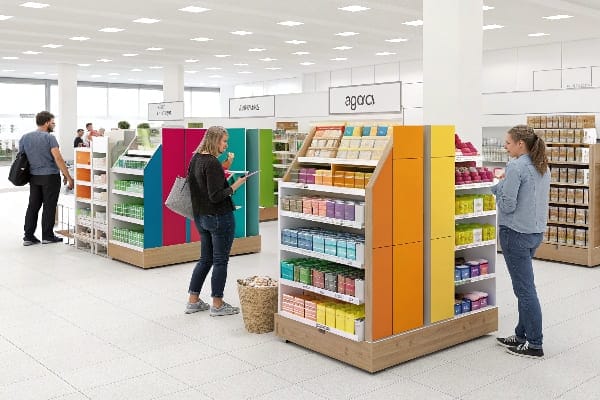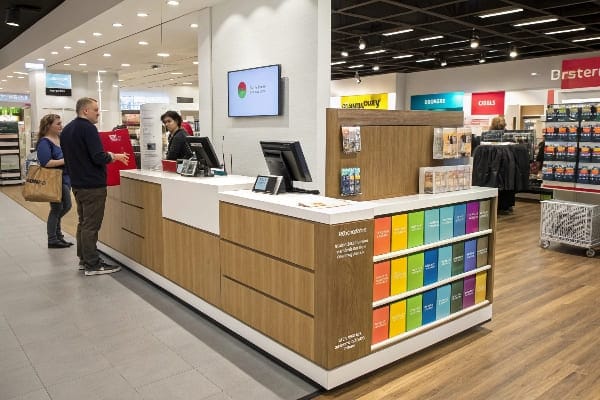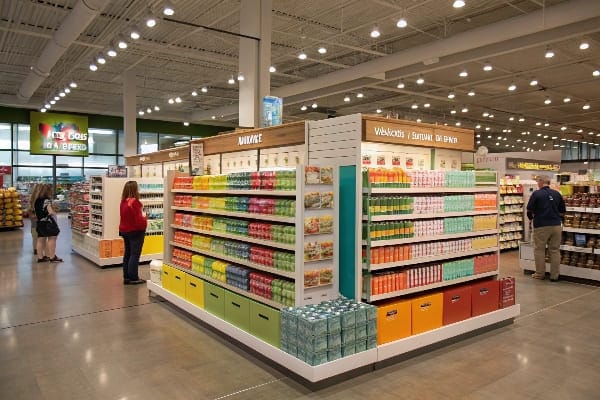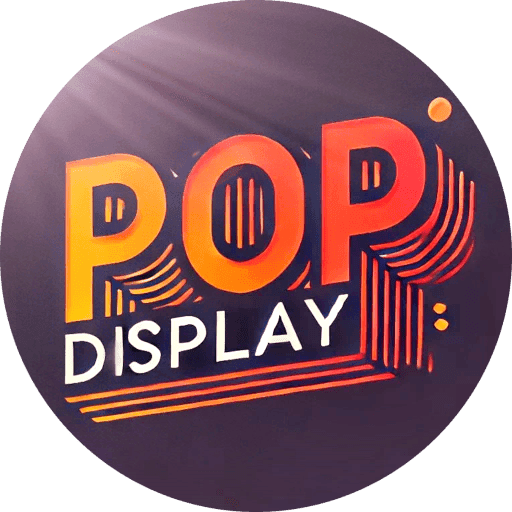在设计零售显示时,由于功能和审美原因,了解架子的典型高度至关重要。零售环境旨在最大程度地提高产品可见性和客户可访问性,因此了解正确的货架高度很重要。
根据商店的布局和客户人口统计,平均零售货架高度通常在48至60英寸(122至152厘米)之间。架子通常可以调节以适应各种产品尺寸并优化空间。

在设计零售空间时,重要的是要考虑理想的架子高度,以使产品在最大化空间时易于访问。让我们探索零售设置中一些常见的架子高度。
架子的平均高度是多少?
当涉及零售货架的平均高度时,大多数商店都会在48至60英寸之间定居。此范围可确保产品在客户的视线和范围内,从而轻松访问而不会引起不适。
零售架子的平均高度为48至60英寸(122至152厘米)。此高度范围可确保大多数购物者的最佳可见性和可访问性。

了解标准的架子高度1有效的显示设计2至关重要。尽管此范围是标准范围,但会根据产品类型和客户可访问性等因素进行变化。各种零售环境中不同类型的架子及其3 。
不同产品类别的不同货架高度
零售环境中的货架4可能会根据所显示的产品而变化。例如,较重或较大的物品可能需要较低的架子,而较轻或更具装饰品的物品可能会在较高的架子上显示以提高可见性。各种产品的货架高度5分解
| 产品类别 | 普通的架子高度 |
|---|---|
| 杂货 | 48-60英寸(122-152厘米) |
| 电子产品 | 50-60英寸(127-152厘米) |
| 服饰 | 60-72英寸(152-183厘米) |
| 美容产品 | 48-54英寸(122-137厘米) |
| 书籍和文具 | 48-60英寸(122-152厘米) |
这些不是严格的准则,但它们反映了不同产品如何需要不同的方法才能达到货架高度6 。零售商经常调整这些高度以匹配目标人群和产品需求7 。
一家零售店的高度是多少?
零售店的高度或该商店的内部天花板高度在购物空间的设计和感觉中起着重要作用。它影响了搁置单元的安排和整体购物体验。更高的天花板会使商店感到宽敞而诱人。
零售商店的天花板通常在10到15英尺(3至4.5米)之间,但根据商店的设计和位置,这可能会有很大的不同。

商店的天花板高度8是最引人注目的建筑特征之一。这是因为天花板越高,垂直空间9用于搁架和产品显示器。让我们更深入地了解天花板高度如何影响零售商店设计10 。
天花板高度对架子排列的影响
天花板高度11不仅会影响美学,而且还决定了高架子的发展。天花板较高的商店经常使用高架子单元12 ,最大化垂直空间并容纳更大的产品。但是,存在权衡,因为高架子有时会使客户难以在更高级别上访问产品。平衡货架高度与商店的室内设计以实现凝聚力的外观也很重要。
| 天花板高度 | 货架布置 |
|---|---|
| 10英尺(3米) | 标准架子高度(48-60英寸) |
| 12英尺(3.6米) | 较高的架子,可能高达72英寸 |
| 15英尺(4.5米) | 最大架子高度,垂直显示器达到84英寸或更高 |
从本质上讲,更高的天花板可以在设计方面具有更大的灵活性,但需要仔细考虑如何平衡美学和产品可访问性。
零售柜台的平均高度是多少?
零售柜台的高度会影响客户互动和员工效率。精心设计的柜台可确保客户在与销售人员互动时感到自在,并允许员工在交易中舒适地工作。
零售柜台的平均高度通常在36到42英寸(91至107厘米)之间,最常见的是36英寸。

零售柜台通常旨在容纳客户或坐在各种高度的客户。让我们探讨为什么计数器13如此重要,尤其是在零售设置14,客户互动15是关键。
不同零售设置的理想柜台高度
在不同设置中的零售柜台可能会略有不同。例如,在一家杂货店中,柜台通常较低以容纳购物车的客户,而在时尚商店中,柜台对于更正式,专业的外观往往略高。基于不同商店类型的计数器高度16 的比较
| 商店类型 | 常见的计数器高度 |
|---|---|
| 杂货店 | 36英寸(91厘米) |
| 时尚零售商 | 38-42英寸(97-107厘米) |
| 电子商店 | 36-38英寸(91-97厘米) |
| 珠宝商店 | 40-42英寸(102-107厘米) |
根据商店的特定需求来量身定制高度很重要。理想的计数器应为客户和员工互动提供舒适的高度。
顶架的标准高度是多少?
顶部架子通常是零售显示中最不可访问的部分,因此必须正确定位它以最大程度地提高可见度和客户访问权限。了解顶部架子的标准高度可以帮助您设计既实用又具有视觉吸引力的显示器。
顶部架子的标准高度通常约为72至84英寸(183至213厘米)。

顶部货架通常用于批量存储17或更少的频繁访问物品。但是,零售商经常将引人注目的产品或促销产品放在顶部架子上以吸引注意力。让我们研究定位顶部货架19的,以确保它们有效地工作。
定位顶部架子以最大程度的影响
虽然很容易将最有价值或高利润的物品放在顶部架子20,但这可能会有缺点。客户可能会发现很难接触甚至注意到这些产品。平衡可见性和可访问性至关重要。一些商店将顶部架子放置高达84英寸,但重要的是要考虑诸如客户高度21和产品尺寸22之。
| 货架位置 | 常见的高度范围 |
|---|---|
| 下架 | 48-60英寸(122-152厘米) |
| 中架 | 60-72英寸(152-183厘米) |
| 顶架 | 72-84英寸(183-213厘米) |
将顶部架子定位在正确的高度可以使产品脱颖而出,但不会使其难以访问。当有效使用时,顶部架子可以作为一个有吸引力的焦点而不会不切实际。
结论
了解零售环境的典型货架高度对于设计功能,可访问和有吸引力的显示器至关重要。了解天花板高度,柜台尺寸和货架布置可确保您的商店为所有客户创造积极的购物体验。
了解标准的货架高度可以增强您的显示设计,从而确保产品可访问并具有视觉吸引力。 ↩
探索有效的展示设计策略,以吸引客户并提高零售空间中的销售。 ↩
了解常见的货架高度,以优化零售布局,以获得更好的客户体验和产品可见性。 ↩
探索此主题可以提供有关在零售环境中有效的销售和客户参与度的见解。 ↩
了解标准的货架高度可以帮助优化零售环境中的产品可见性和可访问性。 ↩
了解货架高度可以优化产品可见性和可访问性,从而增强客户体验和销售。 ↩
了解货架放置中的产品需求可以帮助提高库存管理和销售业绩。 ↩
了解天花板高度的影响可以增强您的零售空间的设计和客户体验。 ↩
发现垂直空间的重要性可以优化您的产品显示并改善销售。 ↩
探索有效的零售商店设计可以帮助您创建更具吸引力的购物环境。 ↩
了解天花板高度如何影响设计可以帮助您创建更具功能和吸引人的空间。 ↩
发现高架子单元的优势,以最大程度地提高空间并改善零售环境中的产品展示。 ↩
了解计数器高度可以增强客户体验和互动,从而对零售设计至关重要。 ↩
了解零售设计最佳实践可以帮助创建吸引和留住客户的诱人空间。 ↩
探索此主题可以提供有关有效的零售策略的见解,以提高销售和客户满意度。 ↩
了解理想的计数高度可以提高客户体验和零售环境中的员工效率。 ↩
了解批量存储策略可以增强库存管理并优化零售环境中的空间。 ↩
探索此主题可以提供有关选择吸引客户关注和推动销售的产品的见解。 ↩
了解这些最佳实践可以帮助零售商最大程度地提高顶级货架上的产品的可见性和销售。 ↩
了解顶部货架的最佳高度可以增强产品可见性和可访问性,从而改善客户体验。 ↩
探索客户高度对产品放置的影响可以帮助零售商优化其布局以提高销售。 ↩
了解产品尺寸在货架定位中的重要性可以导致更有效的销售策略。 ↩

